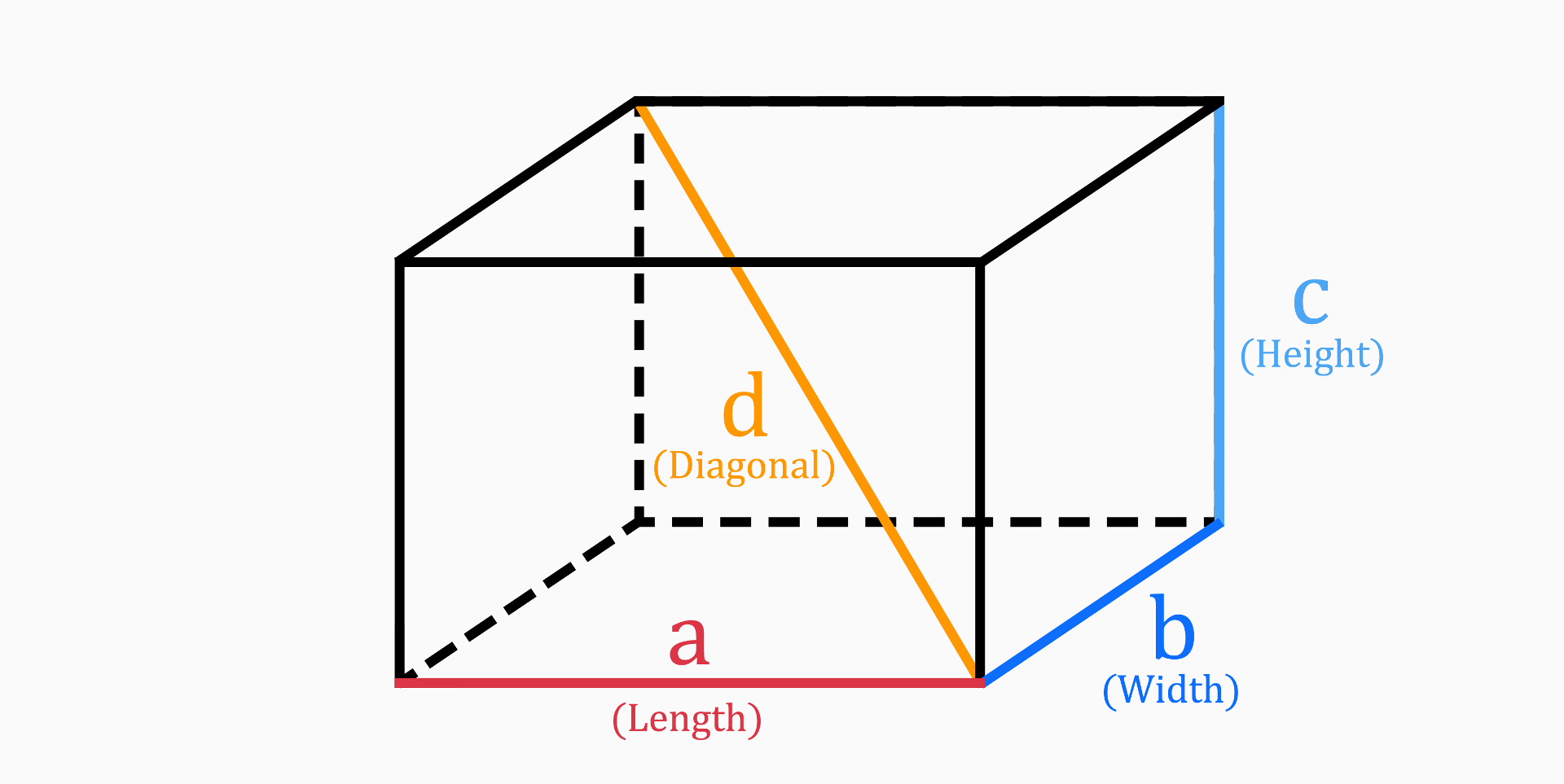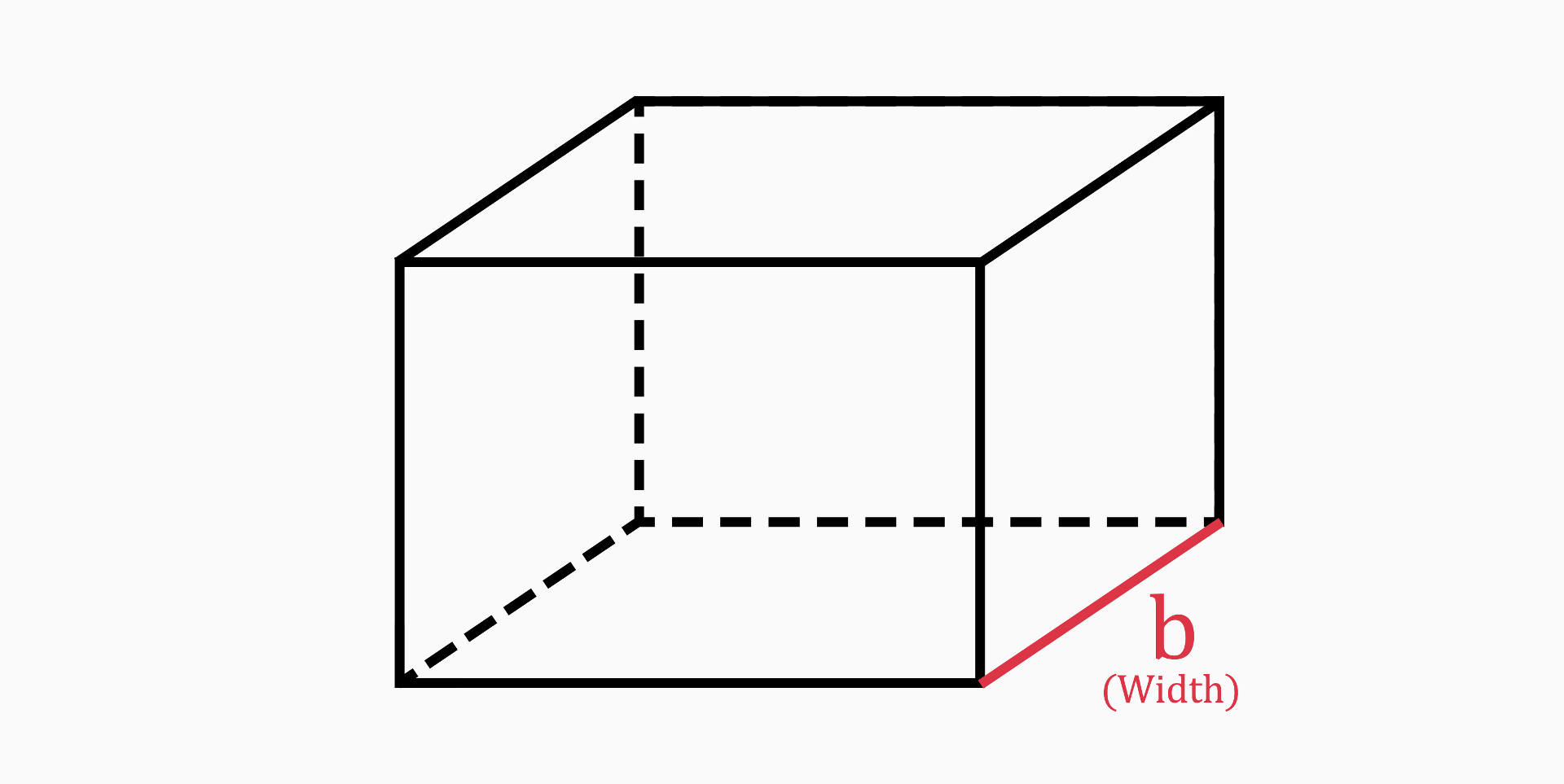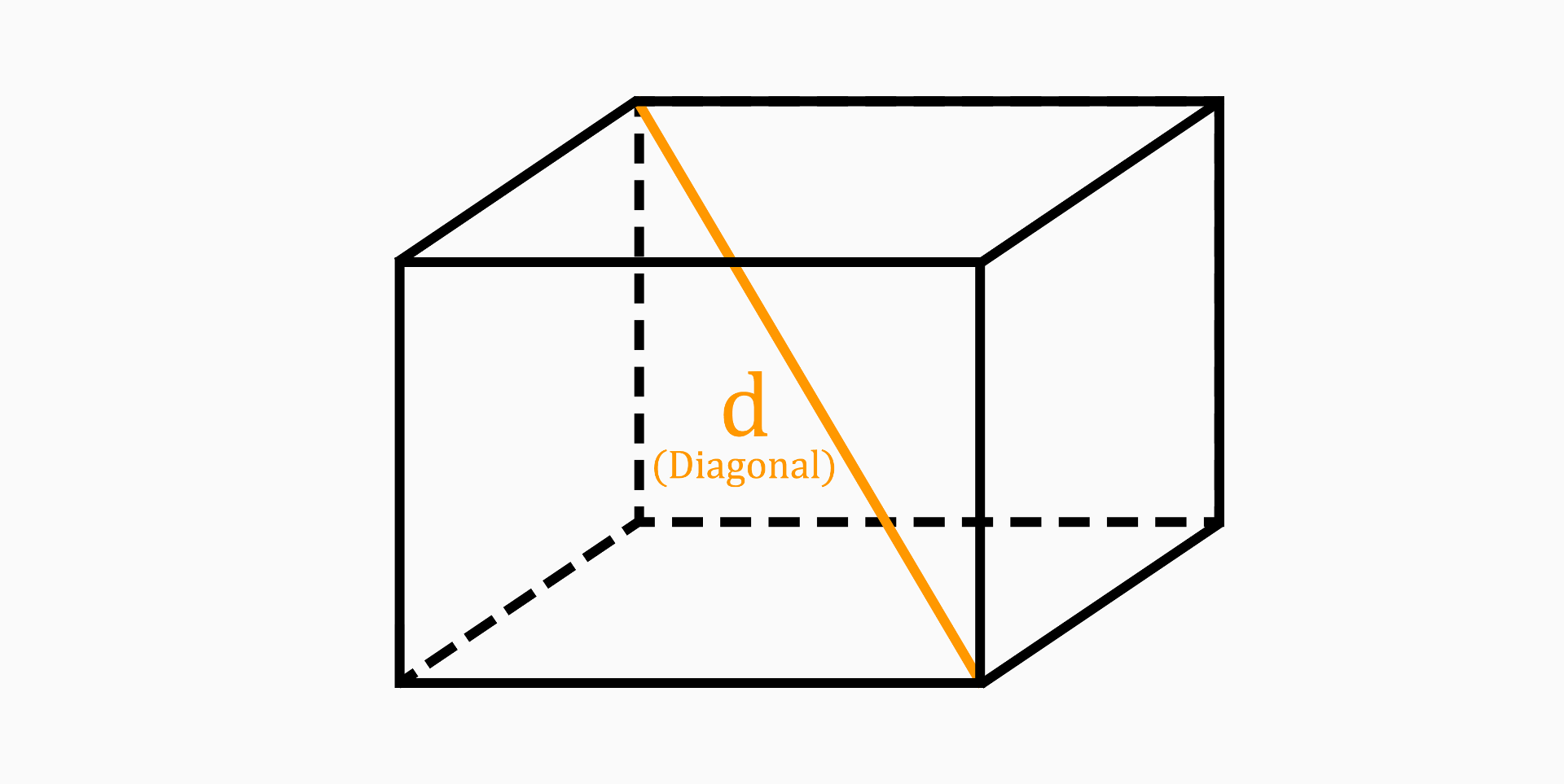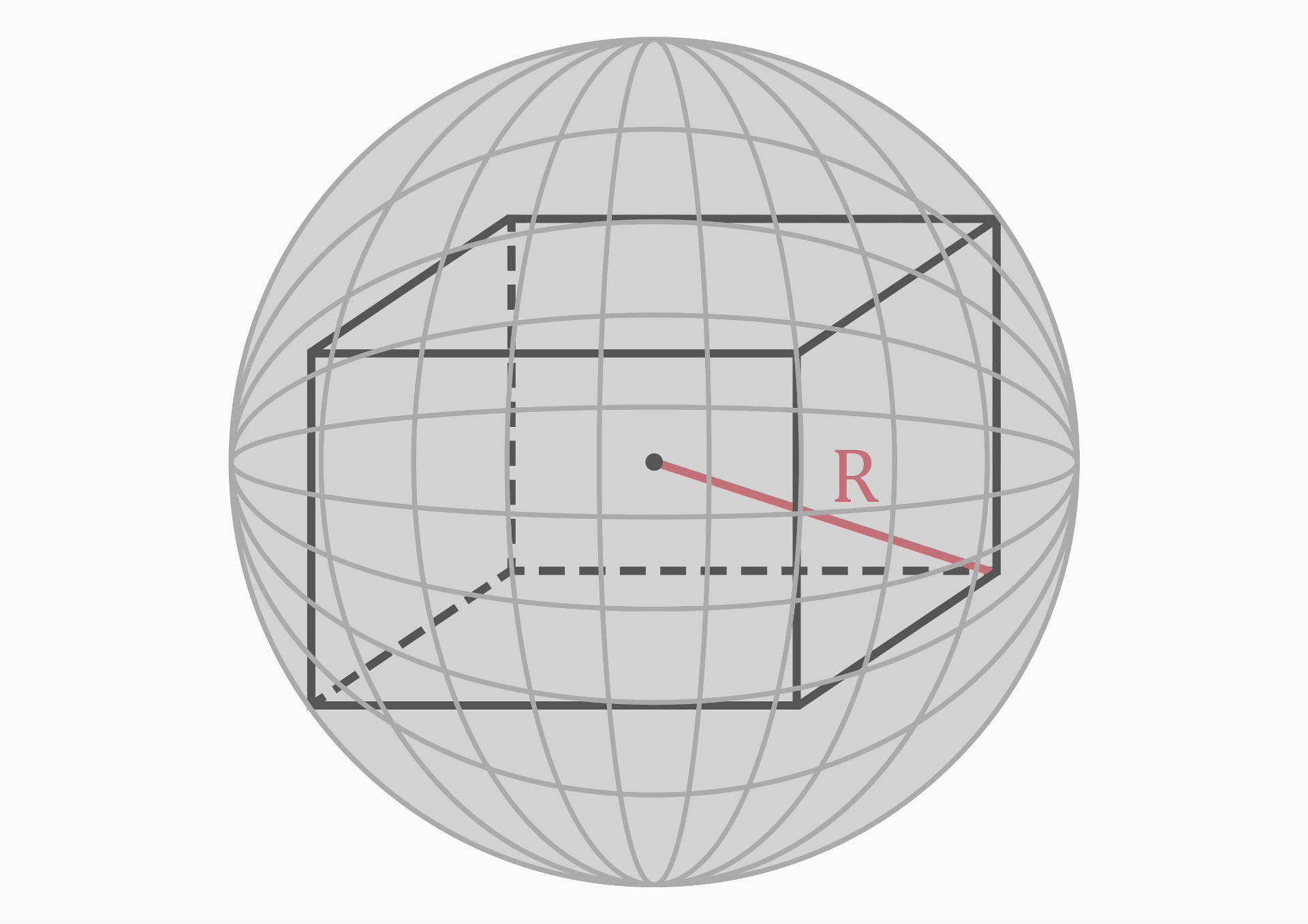Cuboid Calculator
Table of Contents
Cuboid definition

A cuboid is a three-dimensional geometric shape with six rectangular faces. It is also known as a rectangular prism or a box. A cuboid has three mutually perpendicular edges, called the length, width, and height. The length refers to the longer edge, the width refers to the shorter edge, and the height refers to the distance between the top and bottom faces.
In common notation, the three dimensions of a cuboid are often represented by the letters l, w, and h, or alternatively, a, b, and c, as used in CalcKit.
Parts of a cuboid
The seven parts of a cuboid mentioned in this tool are length, width, height, diagonal, area, volume and circumradius.
Length (a)

The length of a cuboid is length of the longer edge. It is usually denoted by l, or a.
The length of a cuboid can be found with the following formulas:
-
If you know the width, height and volume:
a = V / (b * c) -
If you know the width, height and diagonal:
a = √(d² - b² - c²) -
If you know the width, height and area:
a = (A - 2 * b * c) / 2 / (b + c)
Width (b)

The width of a cuboid is the length of the shorter edge. It is usually denoted by w, or b.
The width of a cuboid can be found with the following formulas:
-
If you know the length, height and volume:
b = V / (a * c) -
If you know the length, height and diagonal:
b = √(d² - a² - c²) -
If you know the length, height and area:
b = (A - 2 * a * c) / 2 / (a + c)
Height (c)

The height of a cuboid is the distance between the top and the bottom faces. It is usually denoted by h, or c.
The height of a cuboid can be found with the following formulas:
-
If you know the length, width and volume:
c = V / (a * b) -
If you know the length, width and diagonal:
c = √(d² - a² - b²) -
If you know the length, width and area:
c = (A - 2 * a * b) / 2 / (a + b)
Diagonal (d)

The diagonal of a cuboid refers to a line segment connecting two opposite vertices of the cuboid. It is the longest possible line segment that can be drawn inside the cuboid.
To calculate the diagonal of a cuboid, you can use the following formulas:
-
If you know the length, width and height:
d = √(a² + b² + c²) -
If you know the circumradius:
d = 2 * R
Area (A)

The area of a cuboid is the sum of the areas of all its faces.
The surface area of a cuboid can be calculated using the formula:
A = (2 * a * b) + (2 * b * c) + (2 * a * c)
A = 2 * (a * b + b * c + a * c)
Volume (V)

The volume of a cuboid is the amount of space contained within the cuboid.
It can be calculated using the formula:
V = a * b * c
Circumradius (R)

The circumradius of a cuboid is the radius of a sphere that circumscribes the cuboid, meaning that it passes through all eight vertices of the cuboid.
The circumradius of a cuboid is equal to half the length of its diagonal:
R = d / 2
Unlike a cube, a cuboid does not have an inradius.
